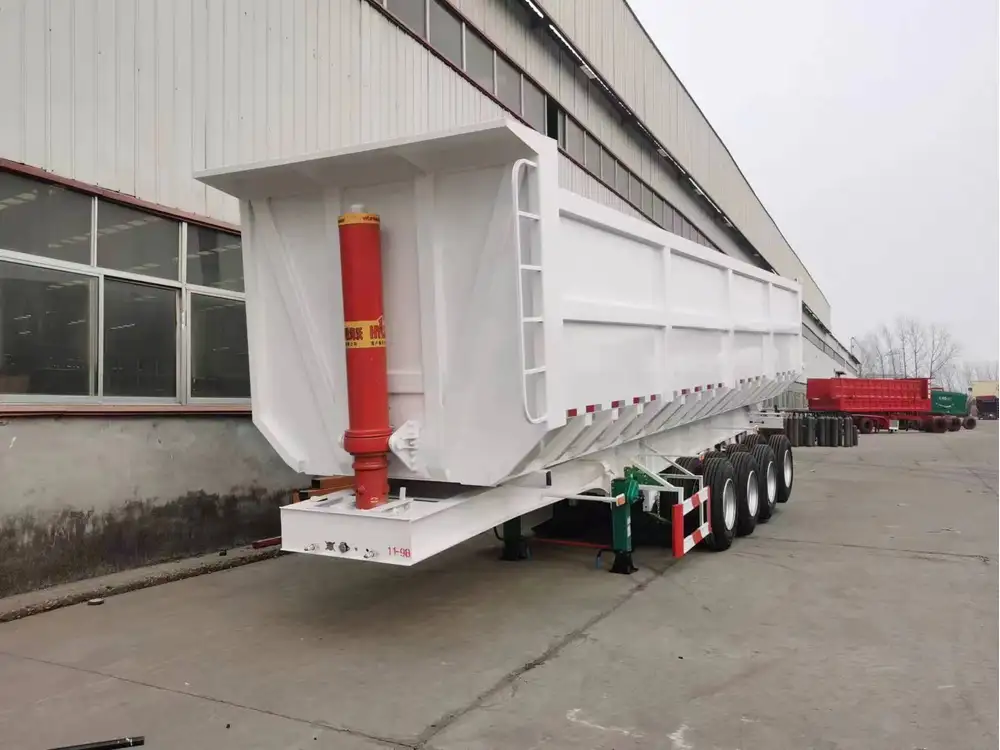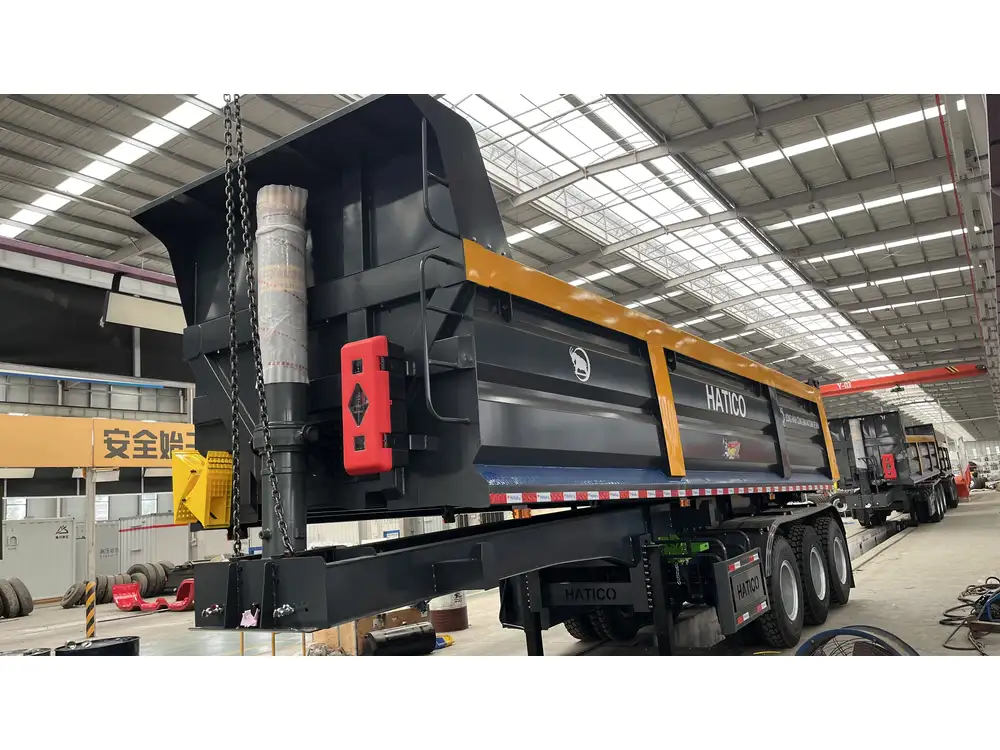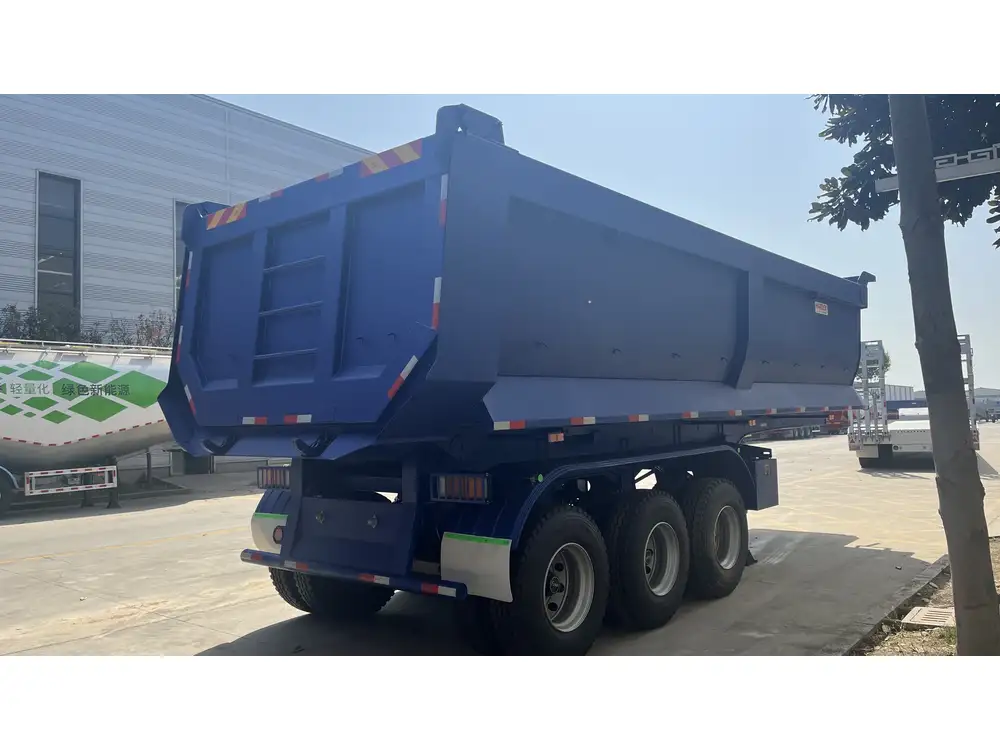When it comes to operating dump trailers, safety is paramount, and the emergency brake system plays a crucial role in ensuring that safety. Understanding how to diagnose and fix emergency brakes on dump trailers can prevent accidents, prolong the lifespan of your equipment, and maintain compliance with regulatory standards. In this article, we will provide a detailed, step-by-step approach to fixing emergency brakes on dump trailers, exploring common issues, tools needed, and essential tips.
Understanding Dump Trailer Emergency Brakes
What Are Emergency Brakes?
Emergency brakes, also known as secondary brakes, are designed to stop a vehicle in case the primary braking system fails. For dump trailers, these brakes are vital, especially when the trailer is loaded with heavy materials. They work independently of the standard braking system to offer additional safety.

How Do Emergency Brakes Function?
Typically, the emergency brake system in a dump trailer functions through a pneumatic or electric mechanism. When activated, either manually or automatically, the system applies pressure to the brake pads, stopping the trailer from rolling or swaying.
Key Components of an Emergency Brake System
| Component | Description |
|---|---|
| Brake Handle | Engages the emergency brake when pulled |
| Air Compressor | Inflates air lines to activate pneumatic brakes |
| Brake Pads | Friction material that grips the brake drum |
| Emergency Brake Cables | Connects the brake handle to the brake system |
| Control Valves | Regulates the flow of air in pneumatic systems |
Common Issues with Emergency Brakes on Dump Trailers

1. Brake Pad Wear
Over time, brake pads experience wear and tear, leading to decreased braking efficiency. When they become too thin, they can compromise overall braking power.
2. Cables and Linkage Issues
The cables that connect the emergency brake handle to the brake system can fray or become disconnected. This can prevent the brakes from engaging properly.
3. Air Leaks (for Pneumatic Systems)
In pneumatic emergency brake systems, air leaks can significantly affect performance. Identifying and repairing leaks is crucial for proper function.

4. Control Valve Malfunctions
A malfunctioning control valve may fail to properly regulate air flow, resulting in weak or unresponsive brakes.
Step-by-Step Guide to Fixing Emergency Brakes on Dump Trailers
Step 1: Assess the Situation
Before diving into repairs, conduct a thorough inspection of the brake system. Look for visible signs of wear or damage. Important factors to consider include:
- Are the brake pads worn?
- Is there any fraying on cables?
- Are there any air leaks present?
- Is the control valve functioning properly?

Step 2: Gather Essential Tools
To repair your emergency brakes, you will need the following tools:
- Wrenches and Ratchet Set – For removing and tightening components.
- Socket Set – Useful for accessing tight spaces.
- Pneumatic Leak Detector – To identify air leaks.
- Brake Cleaner – Essential for cleaning brake pads and components.
- Replacement Brake Pads – As needed if current pads are worn.
- Replacement Cables – If any cables show signs of fraying.
- Lubricants – For ensuring that moving parts operate smoothly.
Step 3: Repairing Brake Pads
Inspecting Brake Pads
- Remove the Wheel Assembly: Use your wrench to remove the lug nuts and take off the wheel.
- Check Pad Thickness: Use calipers to measure the thickness of the pads. If they are below the manufacturer’s specifications, they need replacement.

Replacing Brake Pads
- Remove Old Pads: Unscrew and slide out the old pads from the caliper bracket.
- Install New Pads: Align the new pads in place and secure them.
- Reattach the Wheel Assembly: Replace the wheel and tighten the lug nuts.
Step 4: Addressing Cable and Linkage Problems
- Inspect Cables: Look for frayed or damaged cables. If found, replacement is necessary.
- Remove and Replace Cables: Disconnect the old cable from the brake handle and brake assembly. Attach the new cable, ensuring it’s taut but not overly tight.
Step 5: Checking for Air Leaks (Pneumatic Systems)
- Conducting an Inspection: Apply soapy water to the air lines and inspect for bubbles, which indicate leaks.
- Fixing Leaks: The affected areas can often be patched with tape, or you may need to replace damaged sections of the air line.

Step 6: Testing Control Valves
To evaluate the control valve’s functionality:
- Manual Engagement: Pull the emergency brake handle and listen for a ‘click’.
- Air Check: Ensure proper airflow when the system is engaged. If it fails to open or close, consider rejecting it.
Putting It All Together
Once all repairs have been made:
- Reassemble All Components: Replace any removed parts during repairs.
- Test Drive: Perform a cautious test drive to evaluate the newly repaired brake function. Look for signs of responsiveness and delve into any lingering issues.
Maintenance Tips for Emergency Brake Systems

1. Regular Inspections
Perform routine checks every few months to ensure that all components are in good working order.
2. Keep Brake Components Clean
Cleaning the brake pads and system compartments prevents buildup that can affect functioning.
3. Maintain Proper Air Pressure
Ensure pneumatic systems operate within manufacturer-recommended pressure levels to ensure optimal performance and safety.

4. Document Repairs
Keep a log of all maintenance and repairs. This will assist in tracking performance and recognizing patterns of failure.
Frequently Asked Questions (FAQs)
What Should I Do If My Emergency Brake Fails?
If your emergency brake fails, stop the vehicle safely by using the primary brakes if they’re still operational. Find a flat location to park and conduct an inspection.

How Often Should I Replace My Brake Pads?
Generally, brake pads should be inspected every six months but should be replaced when they become visibly worn or when performance issues arise.
Can I Make Emergency Brake Repairs Without Professional Help?
While many repairs can be conducted independently with the right tools and knowledge, significant issues or lack of familiarity may require professional assistance to ensure safety.
Conclusion
The importance of a functional emergency brake system in dump trailers cannot be overstated. Whether addressing worn brake pads, frayed cables, or malfunctioning control valves, understanding how to systematically identify and fix these issues enhances safety and reliability. By following the detailed steps outlined in this guide, along with committing to regular maintenance practices, you can ensure that your dump trailer remains in peak operating condition. Your dedication to safety not only protects your investment but also safeguards you and those around you during transport.



